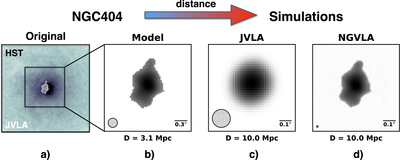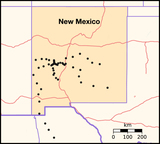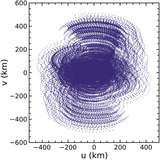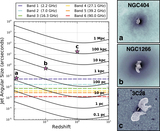Image Details

Caption: Figure 8.
Simulated VLA and ngVLA images of an analog to the jetted AGN hosted by the nearby dwarf galaxy NGC 404 as it would appear if it were ∼3X more distant. (a) An HST optical image is shown in the background colorscale, and the VLA Ku-band (15 GHz) radio contours are overlaid in white. The angular resolution of the radio data is θFWHM = 0.″20, and the extent of the radio jets from end to end is 1.″13 (17 pc). The NGC 404 VLA data were originally published in Nyland et al. (2017). (b) Model radio image of NGC 404 based on the original data shown in panel a) and shown at the true source distance of D = 3.1 Mpc. (c) Simulated VLA A-configuration map of an NGC 404 analog shifted to a distrance of D = 10.0 Mpc at 15 GHz with θFWHM = 0.″15. (d) Simulated map of an NGC 404 analog at D = 10.0 Mpc as it would appear if imaged with the ngVLA at 15 GHz. The angular resolution is θFWHM = 0.″014.
Copyright and Terms & Conditions
© 2018. The American Astronomical Society. All rights reserved.











